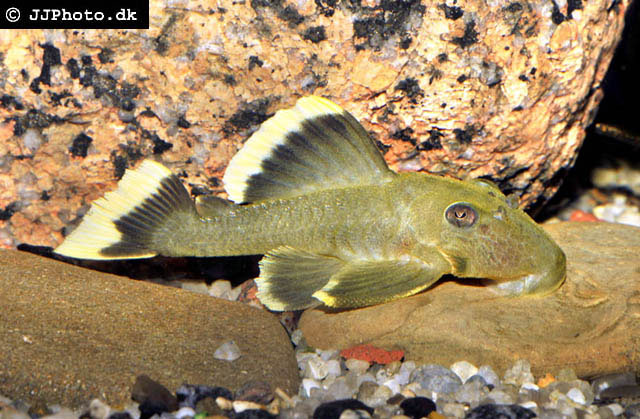| Loricariidae (Armored catfishes), subfamily: Hypostominae |
| 29.6 cm TL (male/unsexed); max.weight: 410.0 g |
|
demersal; freshwater |
| South America: Rio Xingu drainage in Brazil. |
|
Dorsal spines (total): 2-2; Dorsal soft rays (total): 7-7; Anal soft rays: 5-5. Distinguished from its congeners by having a broad orange to yellow band along the entire distal border of dorsal and caudal fins. Can be diagnosed from other species of Baryancistrus by the combination of the following characters: absence of clear dots on the body; naked abdomen; mandibullary teeth around 70; and dark body with very faint, almost indistinguishable light marks. Both young of Baryancistrus xanthellus and Baryancistrus chrysolomus possess wide light bands on dorsal and caudal fins, but these bands are only retained in adults of Baryancistrus chrysolomus. Both species differ in body coloration, Baryancistrus xanthellus is spotted while Baryancistrus chrysolomus is almost plain (Ref. 87296). |
| Adults occur under large flat rocks settled directly on the river bottom, in places with considerable amounts of fine sediments. Young individuals inhabit marginal areas of the rapids, near the river banks, usually just one or two individuals. They occupy under rocks in places with slow to moderate flowing waters, usually with sediment accumulation over the rocks and river bottom. Based on two specimens, this species feeds mainly on diatoms and occasionally on invertebrate larvae associated with fine sediments and sand grains (Ref. 87296). |
|
Least Concern (LC); Date assessed: 07 November 2018 Ref. (130435)
|
| harmless |
Source and more info: www.fishbase.org. For personal, classroom, and other internal use only. Not for publication.

